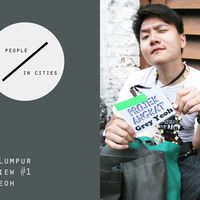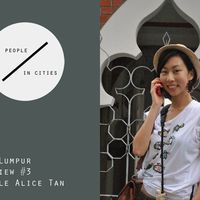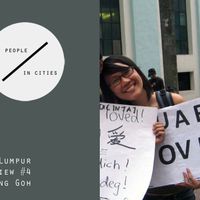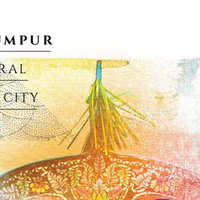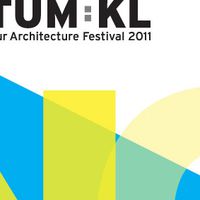By people / In cities : Kuala Lumpur | city profile
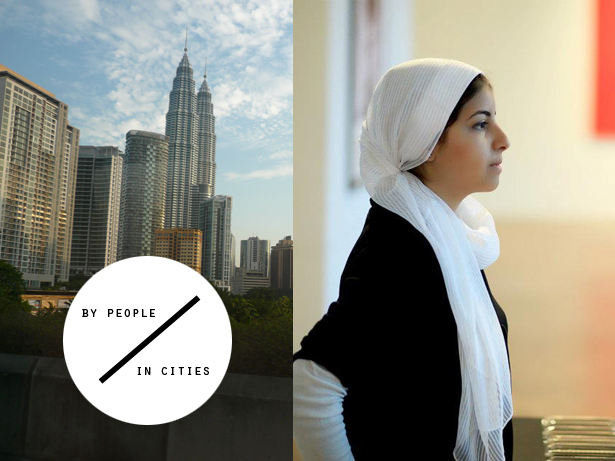
This month culture360.org unveils a new series of articles and interviews entitled By people / In cities, a series of articles and interviews that aims to enhance the understanding of art and culture in Southeast Asia through individual stories and perspectives including artists, cultural practitioners, and policy makers from the following 5 cities: Bangkok, Jogjakarta, Kuala Lumpur, Phnom Penh, and Singapore.
The first article of the series introduces the Malaysian capital city Kuala Lumpur within the context of its creative industries and through examples of public-private partnerships and community-based initiatives that play a role in the economic and social development of the country. Following this article is the first featured interview with Grey Yeoh, a designer, creator and producer of the arts in Kuala Lumpur. He also works as the Arts and Programmes Manager at the British Council Malaysia. It will be followed by interviews of other local players in the field of cultural and creative industries.
With a population of 1.6 million (7.2m for the Greater Kuala Lumpur area, also known as Klang Valley), Kuala Lumpur is a rather small capital city in Asia. Some locals say that its manageable scale has in many ways worked as an advantage for the development of its tight-knit creative community. With an established and growing middle-class, Kuala Lumpur is a promising eco-system for the flourishing of contemporary creative practices and new cultural infrastructure, while simultaneously boasting pockets of authenticity that define a sense of local identity left untouched by global influences.
I see that Kuala Lumpur, where I was born, has so much potential. But beyond infrastructure built to international standards, advertising, and retail businesses driving the economy, the spaces built specifically for art festivals, the traditional ‘kopitiam’ (Chinese coffee shop) concept made famous, and the mentality of a third-world country, KL is as raw as it ever was – Vivian Toh, Editor-in-chief, Cut Out Magazine Malaysia.
Like many other countries in the Southeast Asia sub-region, Malaysia has been recently looking closely at the notion of creative industries and attempting ways to make its creative assets more relevant within the Prime Minister's Vision 2020 framework, which aims to turn Malaysia into a fully industrialized country by then. In 2011, the government issued its first official document on creative policy (Dasar Industri Kreatif Negara), which outlined its priority sectors, with a particular focus on the development of film, animation, and multimedia fields.
The National Creative Policy (Dasar Industri Kreatif Negara DIKN) is focused on 3 main areas: Multimedia, the Fine Arts and Cultural Heritage and is legislated accordingly to fulfill the needs of the industry and to support the development and advancement of each industry in these three areas. The main aspects of the creative industries are taken into consideration and given emphasis to execute the policy strategies including aspects of involvement of NGOs and the development of intellectual property. With this policy, creative industries such as multimedia, fashion and textiles, craft and others will be strengthened and their markets widened both domestically and internationally. – Dato’ Seri Utama Dr. Rais Yatim, Minister of Information, Communication and Culture
The policy document also lists a number of issues and challenges pertaining to cultural industries in Malaysia such as the lack of institutional framework, and a scattered approach from several bodies with a vested interest. Hurdles related to intellectual property protection and promotion, and a lack of awareness on creative industries amongst the general public also lie responsible for some of the shortcomings in Kuala Lumpur and Malaysia.
The exclusion of prominent fields such as design from the Malaysian creative industry framework has raised questions amongst the KL community. Some active professionals on the ground are working to make their field of practice better known by taking concrete actions that mobilize local communities, cultural practitioners, as well as government agencies.
Fertile ground
Creative initiatives have been taking place quite sporadically in Kuala Lumpur over recent years. From organizations, informal and official events, spaces, and start-ups with innovative thinking, the city has proved to be a fertile ground to grow new ideas. An increasing number of young people choose a creative discipline for their university studies, and bold initiatives triggered by the new generation reflect the mindset of a rapidly changing society. It is the case of Thinklab a think-tank promoting design in the context of cultural development and innovation (and working at the junction of the public and private sectors), Dot Dot Dot an online podcast site dedicated to creative storytelling (through fiction and non-fiction) about Malaysia and Malaysians. 3-year old CUT OUT Magazine is another creative catalyst run by young motivated entrepreneurs, and Poskod Malaysia, a successful information site that mobilizes the Kuala Lumpur community through local news content that is cultural, creative, and thought provoking.
We believe that the more we know about ourselves and the people around us, the stronger our communities, the easier our participation as citizens in this country, and the better our lives. – Poskod
The development of cultural and creative industries in Kuala Lumpur is often multidisciplinary in nature and defined through experiential activities that seem to break traditional boundaries across various fields of practice. In that respect, the city’s future is tied to the participatory processes that shape new cultural patterns or perceptions, and hopefully lead toward the application of effective frameworks for the development of its creative economy.
Joining forces across different sectors
The ripple effect is already happening as the number of actions from creative industries organizations surged within the last few years. However, a lack of concerted effort to generate meaningful results for the practicing communities has been lacking. In response, recent initiatives by professional bodies are starting to generate a critical mass with the likely power to reach the higher layers of political hierarchy in the years to come. One example is a coalition of 9 KL-based design organizations (1) led by the Malaysian Design Council (Majlis Rekabentuk Malaysia under the Ministry of Science Technology and Innovation) that have joined forces to take design to the next level and have it better integrated within a national creative industry policy.
Other agencies such as the Multimedia Development Corporation (MDeC) are public-private hybrids that operate as private enterprises supported by government funding that includes foreign investment money. This type of agency supports the development of small start-up businesses in the creative industry sector by providing legal (i.e. permits, registrations) and financial guidance to both Malay and foreign companies looking to set up office in Malaysia. Its role is to also advise governments on legislation and policy frameworks to further develop the local creative economy.
In the fourth quarter of 2010, the NKEA/CCI (National Key Economic Area agency) recommended a Scholarship scheme for the Creative Content Sector to address the shortcomings in manpower requirements for industry development. The recommendation by NKEA/CCI was based on the fact that although there appears to be enough talent to meet the demand, the industry has however expressed serious concern over the quality and skills of talent pool. It is to address these qualitative gaps that a Creative Industry Lifelong Learning Program through Training Grants was introduced. – Creative Industry Lifelong Learning Programme (CILL)
Concrete results from this scheme and the MDeC Green Lane Policy (which offers start-up funds, R&D schemes, intellectual property Grant Schemes and seminars to increase IP monetization in the country) have yet to be measured and assessed in the years to come.
From debate to action
Kuala Lumpur, often unfairly viewed behind the shadow of its imposing next-door neighbour Singapore, has been struggling to keep its strongest talents due to a shortage of opportunities, and a lack of supportive structures for young people transitioning toward the professional world. This problem can be viewed both as a threat for the development of local creative industries, and an opportunity to take action.
Running parallel to government support schemes, and on the sideline, young designer Michelle Tan founded and launched the Youth Design Network (YDN) – a micro support platform for young designers run by young designers to tackle the brain-drain issue facing Kuala Lumpur and Malaysia. The concept is simple: to connect young designers with employers or clients and to serve as a connector in a city where professional support structures are scarce.
This self-started initiative seems to reflect the needs of a larger creative community and the challenges affecting the generations to follow as Kuala Lumpur and Malaysia have ‘incredible talents but so little platform to perform’.
The creative community in KL is young, vibrant and rather progressive within the global scene. However, it needs to be more exposed to international talents and needs a more dynamic creative industry ecosystem as well as better education in order to grow and sustain itself. - Muhamad Razif Nasruddin, Co-founder, Thinklab
With the likelihood of seeing this type of small action multiply, the temperature will slowly rise in Kuala Lumpur. Content is not scarce because the city has the minds, the talents, and the drive to move forward. What is perhaps missing is a coherent platform that encompasses different sectors and disciplines, where creative talents are nurtured, and empowered through concrete actions rather than just a pale vision of what could be.
KL bursts a special kind of energy that I don't see elsewhere yet. The vibe is gradually getting stronger with more and more youths take on design as a profession seriously. There are people who have tried and stopped their efforts in order to pursue a different kind of life, but there are also the ones who are determined to continue putting KL on the world map of creativity. – Vivian Toh
(1) Coalition of design-related organizations:
- MRM; Majlis Rekabentuk Malaysia (Malaysia Design Council)
- Graphic Design Association of Malaysia (wREGA)
- PAM; Pertubuhan Arkitek Malaysia (Architecture)
- Pereka (Industrial Design)
- Bumiputera Designers Association (Fashion)
- Malaysian Invention & Design Society
- Malaysian Institute of Interior Design
- Make Condition Design (thinklab©)
- Association Of Accredited Advertising Agents of Malaysia (4As)
--
By people / In cities is a series of articles and interviews that aims to enhance the understanding of art and culture in Southeast and East Asia through individual stories and perspectives including artists, cultural practitioners, and policy makers from the following 6 cities: Bangkok, Jogjakarta, Kuala Lumpur, Phnom Penh, Hong Kong and Singapore.
Sali Sasaki is the Editor Asia of culture360.org
Image credits: Sali Sasaki, Idzwan Junaidi & pixo2
Translation from Malay: Sunitha Janamohanan
Similar content
posted on
08 Mar 2018
from - to
01 Jul 2011 - 31 Jul 2011

